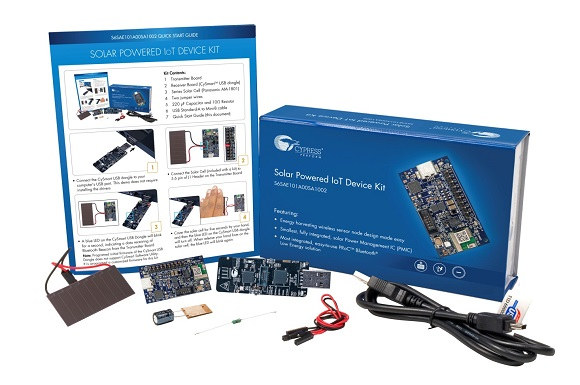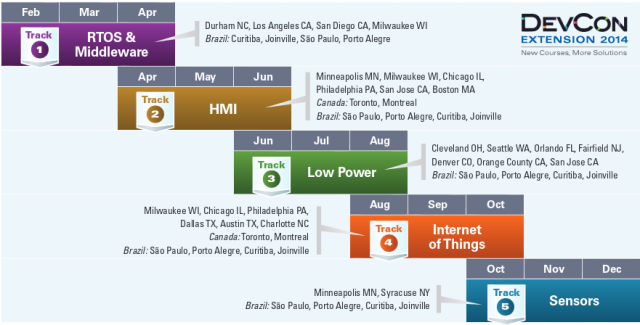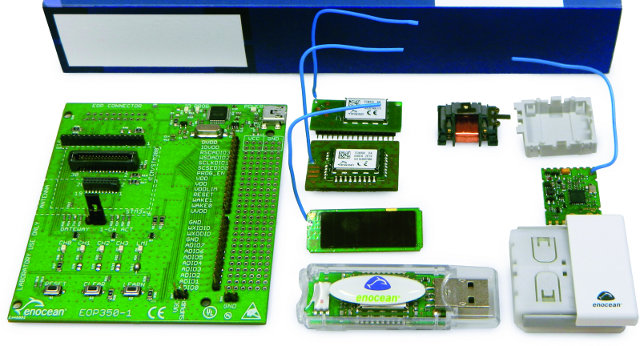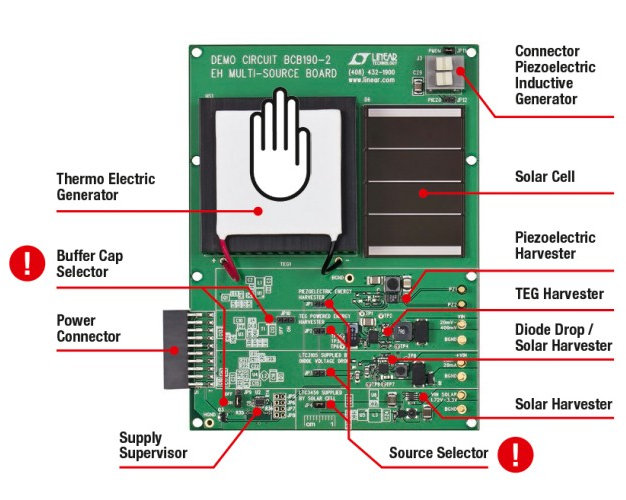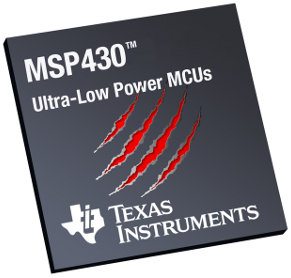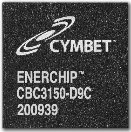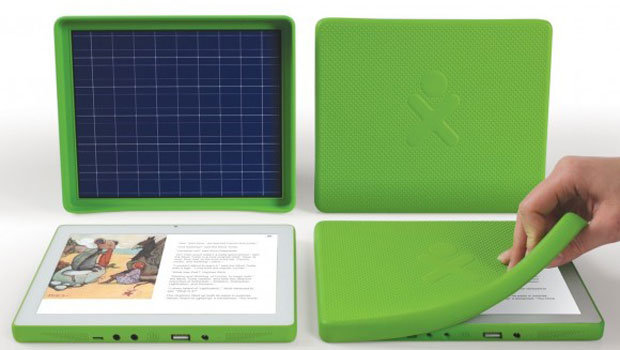Cypress Semiconductors has recently launched a Solar powered IoT device kit, with the easy-to-remember codename S6SAE101A00SA1002, featuring the company’s CYBLE-022001-00 Bluetooth Smart module, and S6AE101A energy harvesting power management IC (PMIC) on the main board, as well as all accessories such as a small solar panel, a BLE-USB bridge, and all necessary components and cables. Target applications include battery-less wireless sensor node (WSN), IoT device that monitors various sensors, BLE Beacon, wearable device, building energy management system (BEMS), Home EMS, Factory EMSystem, wireless lighting control,wireless HVAC sensor and security system. The main features of the Energy harvesting motherboard include: Cypress CYBLE-022001-00 Bluetooth Smart module with ARM Cortex-M0 @ 48MHz, 128 KB flash, 16KB SRAM Cypress S6AE101A energy harvesting PMIC Sensor – Temperature & humidity sensor USB – 1x USB port for programming and debugging Debugging – SWD (serial Wire Debug) connector, JTAG header for USB-BLE Expansion – Sensor expansion connector […]
ShiftWear Shoes Integrate a Flexible e-Paper Display, Energy Harvesting Capabilities (Crowdfunding)
ARM CTO, Mike Muller, showcase imprinted electronics, that is an integrated circuit printed on a plastic film, at ARM TechCon 2015, and several products are featured flexible displays, so in future flexible electronics could bring innovation applications from truly wearables electronics to traceable bank notes, and so on. A company has launched an Indiegogo campaign for a new product, that’s both cool and relatively useless, with ShiftWear sneakers that integrate a flexbile e-Paper display, a battery that recharges by harvesting energy from your steps, and some connectivity (likely Bluetooth LE) to update the display from your iOS, Android or Windows device. Three models are available: L1, M1 and H1 referring to low height, medium height and high height of the part around the ankle (heel tab?). But all three have basically the same features: Always-on HD color e-paper flexible display Up to 30 days of battery life Waterproof up to […]
Renesas DevCon Extension Organizes Free One-Day Courses About IoT, Low Power, Sensors and More
I’ve just come across a YouTube video called Ultra-Low-Power Solutions for Wearable Technology and the ‘Internet of Things’ On Renesas channel. The video itself promotes Cymbet EnerChip Solid State Batteries and Kits, working together with Renesas MCUs, and the interesting part is that they’ll provide a free training session for the kit as part of Renesas Devcon Extension 2014. This is not a single event as you may think, but instead the company hosts one-day workshops in various cities in the US and Brazil covering various tracks all year long, as you can see in the simplified schedule below. RTOS & Middleware track is not available anymore, but you can still attend training sessions for Human Machine Interfaces, Low Power designs, the Internet of Things and Sensors. As an example, the following lectures are available for the Low Power track: Renesas Low-Power MCU Lineup (30 minutes) – Updated technology roadmap […]
EnOcean EDK 350 Developer Kit For Energy Harvesting Wireless Solutions
EnOcean unveiled the EDK 350 developer kit which includes energy harvesting and wireless (RF) modules, and demonstrated the platform at Electronica 2012 on Future Electronics and Farnell booth. The new kit can help OEMs design batteryless applications quickly in a cost-effective manner for building and industry automation, smart homes and machine-to-machine systems. EnOcean EDK 350 Developer Kit includes the following modules: A universal programmer board (EOP 350) TCM 320 (transceiver module) STM 300 (universal wireless sensor module) ECO 200 (mechanical energy converter) PTM 330 (transmitter module for ECO 200) PTM 210/PTM 215 (energy harvesting switch module, PTM 215 includes data encryption function) STM 330 (energy harvesting temperature sensor module) USB 300 (USB wireless gateway) Wireless modules are normally available at frequencies of 315 MHz (for North America and countries following FCC specs) and 868 Mhz (for Europe and countries following R&TTE specs). The EDK 350 developer kit can be extended with […]
199 Euros “Energy Harvesting Solution To Go” Kit with Energy Micro Cortex M3 Starter Kit
If you’re interesting in battery less ultra low power applications, Energy Micro, Linear Technology and Würth Elektronik have announced an energy harvesting development platform early last month. The “Energy Harvesting Solution To Go” Kit is composed of an Energy Micro Giant Gecko (Cortex M3) Starter Kit and an energy harvesting board that is capable of getting enough solar, thermal, piezoelectric or electromagnetic energy to power the MCU board. The power connector shown above connects directly to the Giant Gecko Starter Kit board to provide power. Although there are 4 energy harvesters on the board, only one power source can be selected at a time via jumpers. Several power sources can be selected by using diodes. The board The energy harvesting board offers two integrated energy sources: A solar cell (32mm x 50mm) A thermo-generator (40mm x 40mm). And 2 other external energy sources can be added to the board via […]
Texas Instruments Announces Ultra-Low Power MSP430 “Wolverine” MCU Series
Texas Instruments announced a new series of its MSP430 MCUs codenamed “Wolverine” for its aggressive power-saving technology. The company claims this ultra-low-power MSP430 microcontroller platform offers at least 50 percent less power consumption than any other micro-controller in the industry with 360 nA RTC mode and less than 100 µA/MHz active power consumption. Since typical battery powered applications spend as much as 99.9 percent of their time in standby mode, Wolverine MCUs power consumption of 360 nA in standby mode would more than double the battery life. Here are the key power savings techniques and technology using the the Wolverine MCU (MSP430FR58xx): Ultra low leakage (ULL) process technology. TI developed ULL technology that offers a 10x improvement in leakage and optimized mixed signal capabilities. Power reduction are also achieved thanks to an improved 130 nm process technology and more than 30 power-optimized analog and digital components. Unified FRAM (Ferroelectric Random […]
Cymbet EnerChip Solid State Batteries and Energy Harvesting Evaluation Kits
Cymbet has developed rechargeable solid state batteries called EnerChip for Embedded Energy, Power Backup and Energy Harvesting. Applications include backing up Real Time Clocks (RTC), Micro-controllers (MCU) and SRAM devices. The company says “EnerChips are ideal for energy harvesting powered devices such as wireless sensors, medical devices, data loggers and remote location tracking equipment.” Those chipsets aim at replacing batteries such as CR2032 batteries that you can find in watches, calculators and other low power devices. The company emphasized three key benefits of such “batteries”: EnerChips are more than 10x smaller than non-rechargeable coin cell batteries EnerChips last 3x longer than conventional coin cell batteries EnerChips are less expensive to use than conventional coin cell batteries or super caps. The price starts at 20 US cents in volume quantities. You can watch the promotion video below for an overview of those chips. Cymbet shows a lot of mobile phones in their video, […]
OLPC XO-3 Sugar Linux Tablet
The One Laptop Per Child (OLPC) foundation has unveiled the OLPC XO-3 Tablet at CES 2012. This Tablet features a 8″ 1024×768 capacitive LCD touch screen running a version of Sugar Linux for Touchscreen. This must be the only tablet ot running Android at CES 2012… This current sample only have a front camera, but the final device will have both a front and rear camera. They also have an optional solar panel cover (4W panel), that can be used to charge the tablet (2W), so in ideal conditions if you charge it for 2 hours, the tablet can be used for 4 hours. Alternatively, you can also charge it for the hand cracker. A Pixel Qi tablet (not shown in the video below) is also available for extra costs (I’ve heard 100 USD extra) for better readability. OLCP did not specify availability. The way OLPC works is that they […]


